Who are the UK yellow vest protesters?
- Published
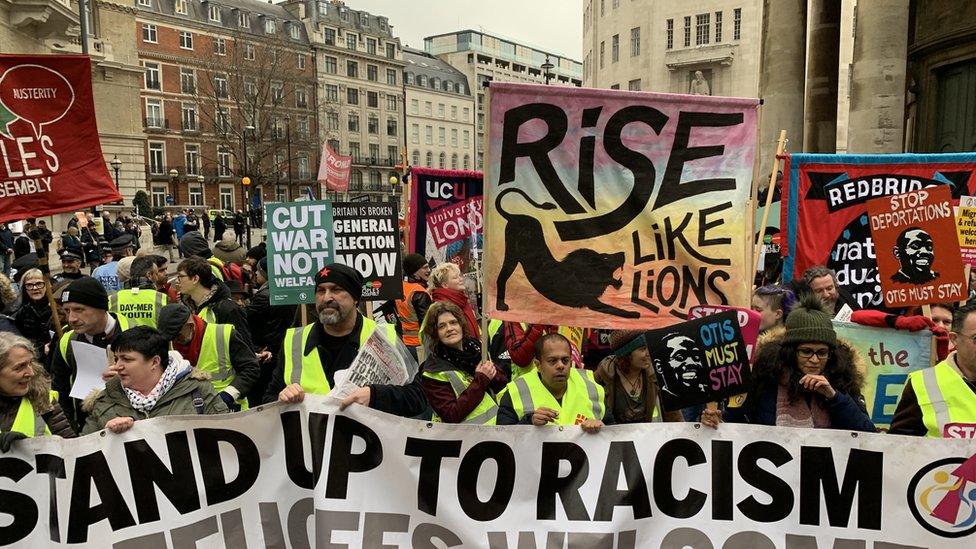
Hundreds of people put on high-visibility jackets in imitation of French protesters as they marched in central London against government cuts.
Organisers from The People's Assembly Against Austerity described Saturday's march as the arrival in the UK of the "yellow vests" movement that rocked France in November 2018.
They even brought two campaigners from across the Channel to seal the relationship.
But they are not the only group to claim the spirit of the yellow vests, with pro-Brexit demonstrators outside Parliament also putting on high-vis jackets.
So why are demonstrators battling over this symbol?
The French connection
"English people, you look good in yellow!" said a message on the jacket of Erick Simon.
He is one of the gilet jaunes, as they are known in France, who travelled from Normandy with fellow organiser, Laurie Martin.
Ms Martin said she came "to support the British because our demands are the same as those fighting austerity across Europe".

French protesters Erick Simon and Laurie Martin wore messages of support
Many protesters said they had been inspired by events in France.
Kylie Crawley said she wanted to stand against cuts to services for her 17-year-old daughter, Kacee, who has Down's syndrome.
"To me the French yellow vests were ordinary people wanting to get out and tell people how bad things had got and how they wanted change," she said.
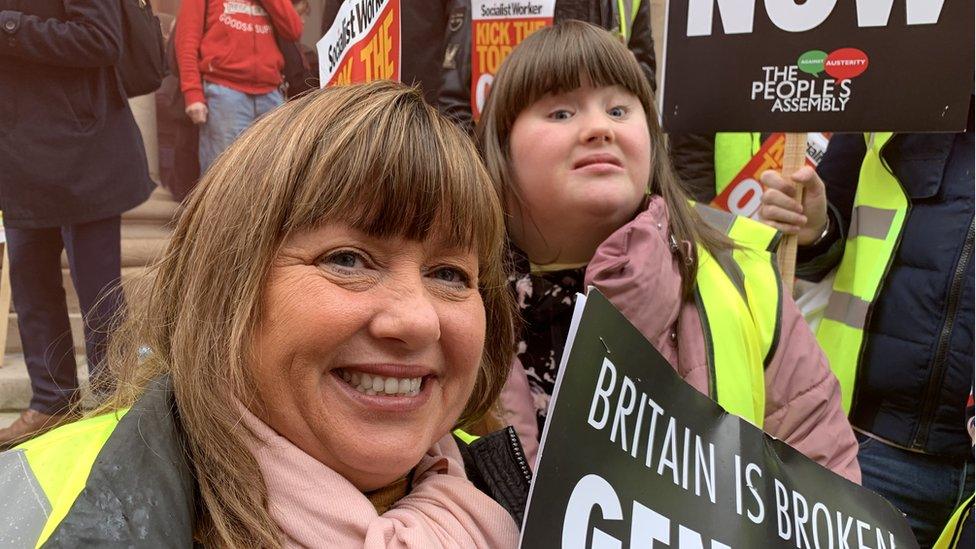
Kylie Crawley bought yellow vests online, including for daughter Kacee
Jim Scott, who got up at 04:00 GMT to travel from west Wales to the protest, said the vests had become a powerful "symbol for change".
"They're facing the same things in France: austerity, cuts to public services, expanding the gap between rich and poor. That's how this movement has started."
As the march began, one protester cried, "Let's show the French what we can do!"
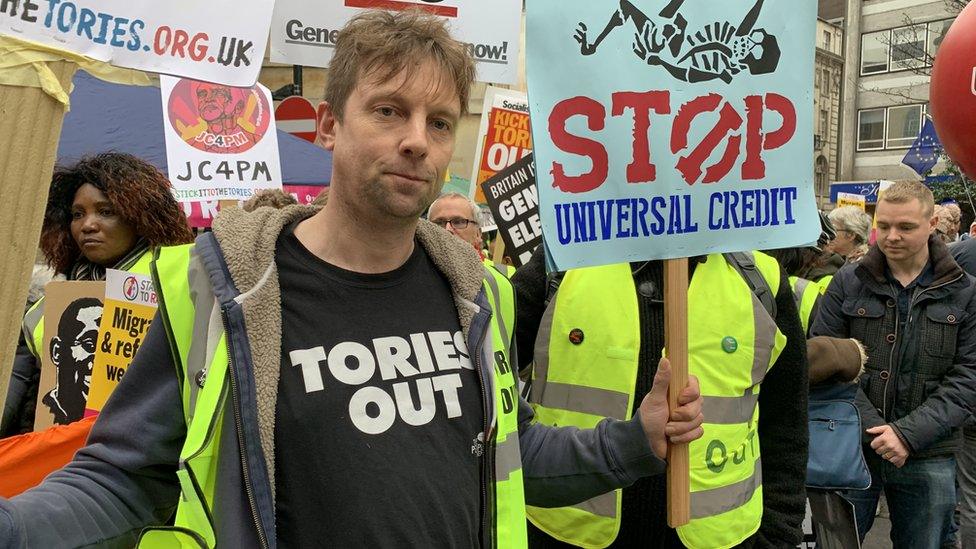
Jim Scott said the yellow vest was "a symbol for change"
Is it a right-wing or left-wing symbol?
Meanwhile, another group of protesters was outside Parliament, also in yellow vests.
They waved the union jack, burned EU flags and denounced "left-wing scum". "We're not far right, we're just right," they chanted.
Allow X content?
This article contains content provided by X. We ask for your permission before anything is loaded, as they may be using cookies and other technologies. You may want to read X’s cookie policy, external and privacy policy, external before accepting. To view this content choose ‘accept and continue’.

In France, Interior Minister Christophe Castaner has said violent far-right and far-left groups have both infiltrated the gilet jaunes protests.
But Tom Griffiths from the People's Assembly, which organised the UK anti-austerity march, said that because the movement had "burst out of the streets", it meant different things to different people.
He said marchers, who carried banners in support of migrants, stood against racism and fascism.
"We are absolutely not allowing the far right to take over the yellow vest movement in this country. They've been forced out the yellow vest movement in France and they'll be forced out the yellow vest movement in this country," he said.
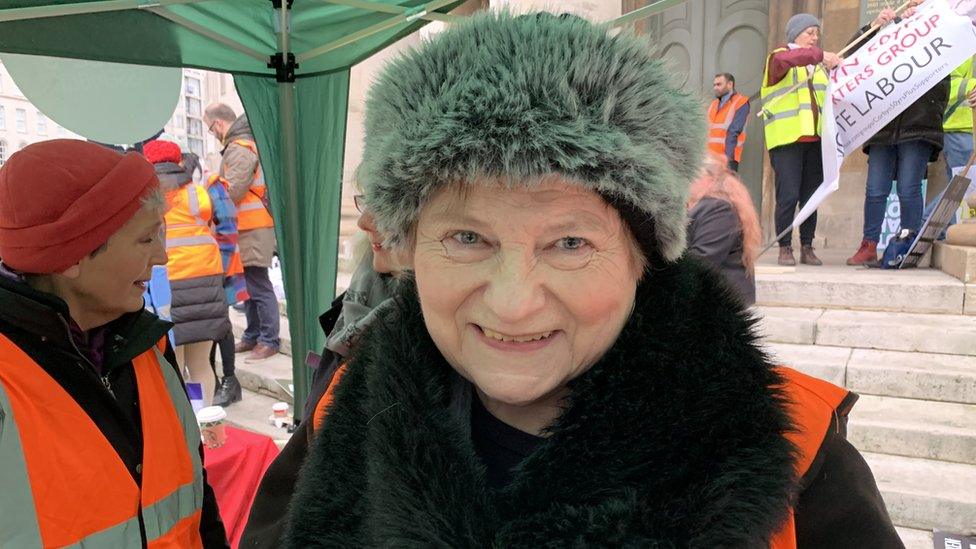
"The issues are the same, here and in France," said Katerina Kohler
For some, the jackets sent out a message of togetherness. Katerina Kohler, who was at the People's Assembly stall selling them for £3 each, said: "It gives us a nice unity for people all to wear the vests."
Some marchers declined to wear the high-vis jackets in case the symbolism might be misinterpreted, however.
Antonia Bright, a campaigner with the anti-racism group Movement for Justice, said she wanted to "steer away from white populism".
"I don't need it to march for what I am standing for," she said.
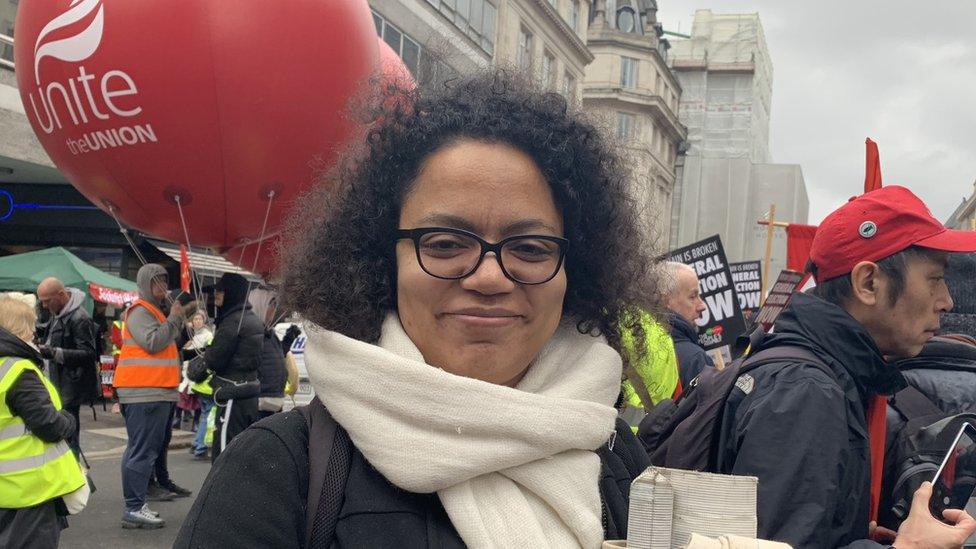
"It's not a uniform," said Antonia Bright, who chose not to wear a yellow vest
How is the movement different from France?
On Saturday, France put 80,000 police officers on duty to cope with thousands of gilets jaunes demonstrators across the country.
In London, by contrast, hundreds of people attended the anti-austerity march. BBC home affairs correspondent Daniel Sandford said the pro-Brexit demonstration was smaller and attracted between 200 and 300 people.
The French protests were a grassroots movement, born online, and initially targeted against fuel taxes. The yellow vests were used as a symbol because every French driver is legally required to carry one in their vehicle.
In the UK, protesters said they either bought their jackets online, picked them up at the stall or, in several cases, already had one they used for stewarding at other protests.
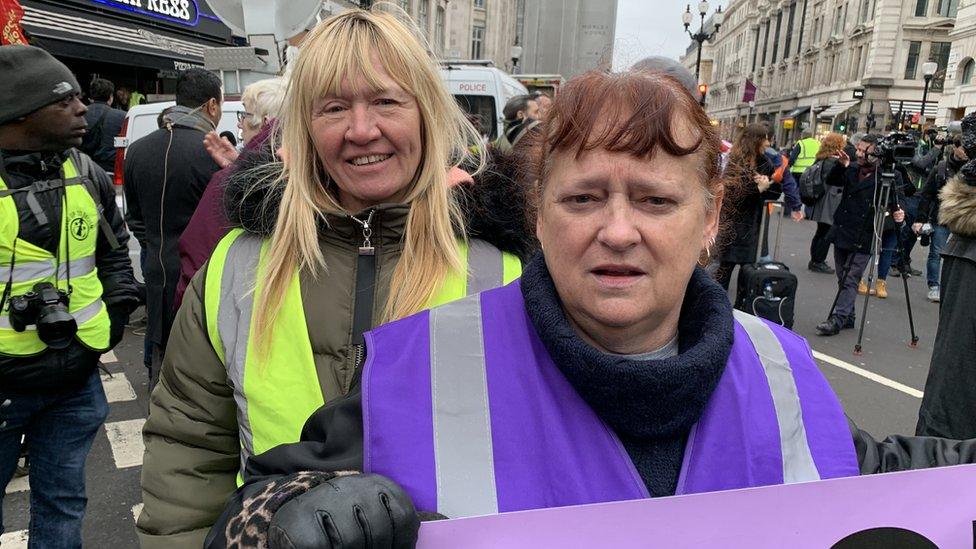
Sharon Stafford-Jones and Debbie Hutchins were protesting against changes to women's pensions
And while the French protesters were outside of established political organisations, the British anti-austerity march brought together several trade unions and campaign groups, and was attended by Labour shadow chancellor John McDonnell.
Many attendees said they hoped the movement grew in the UK to become as powerful as its French counterpart.
Sharon Stafford-Jones said she had been in France recently where she said there was "a wonderful community spirit coming together" over the protests.
But Jeremy Jennings, professor of political theory at King's College London, was sceptical about whether the movement would translate.
He said: "The situation in France is pretty desperate. I can see why someone would want to try and use that mobilisation in Britain, but I'd be surprised if it took off."
- Published8 January 2019
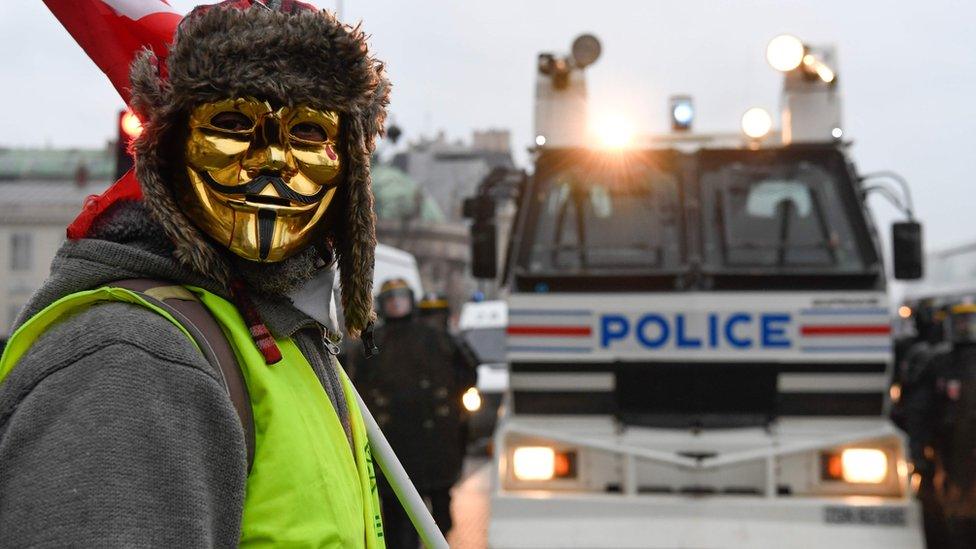
- Published6 December 2018
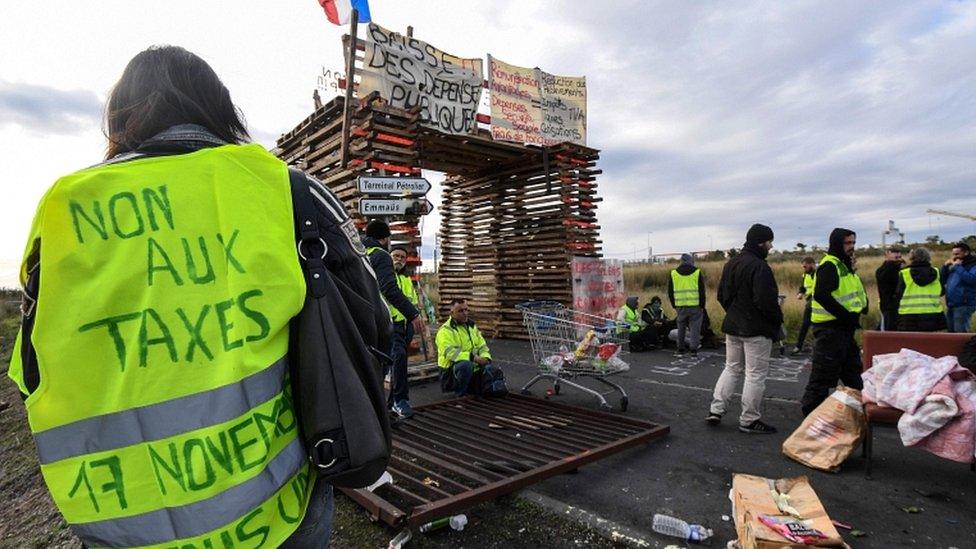
- Published14 December 2018
